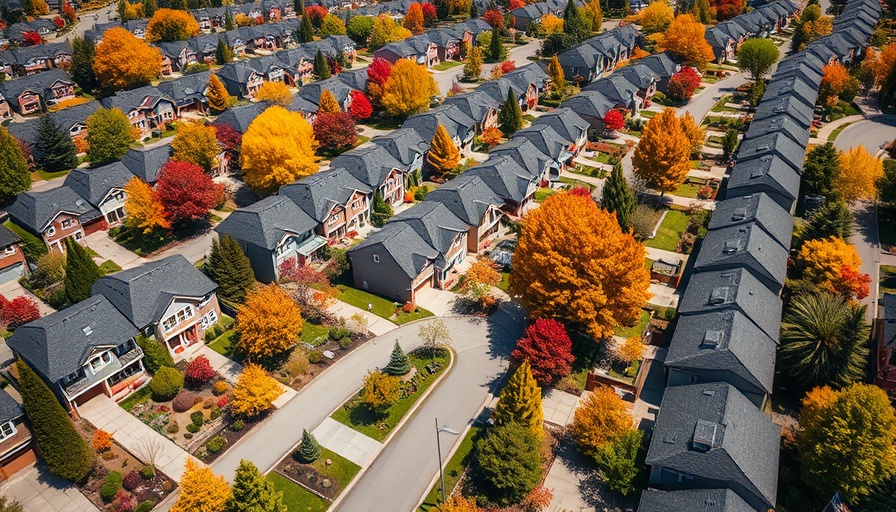
Understanding the Essentials of HOAs and CDDs
For many home buyers, the journey to owning a home involves much more than finding the right space; it can mean navigating the complexities of community governance, especially concerning Homeowners Associations (HOAs) and Community Development Districts (CDDs). While both HOAs and CDDs share the common theme of managed community living, understanding their fundamental differences is vital for making informed decisions and avoiding unexpected complications.
The Role of Homeowners Associations (HOAs)
HOAs serve as the backbone of many residential neighborhoods. They are private entities formed primarily to oversee and maintain community norms, thereby protecting property values and ensuring a harmonious living environment. An HOA is governed by an elected board of directors made up of residents, creating a space where homeowners can voice their concerns and influence operations.
One of the most critical responsibilities of an HOA is the maintenance of common areas, which can include parks, pools, and clubhouses. This maintenance is funded through regular assessments, collected monthly, quarterly, or annually. However, homeowners should be prepared for potential special assessments, which can arise from unforeseen expenses, such as significant repairs or emergencies. Understanding these fees is essential as they can often catch new residents off guard.
What To Know About HOA Fees
HOA fees are designed to cover various operational costs, from landscaping and utility bills to insurance. It's crucial for homeowners to recognize that these fees are separate from their mortgage payments, a detail that can easily be overlooked.
Moreover, many HOAs can impose penalties for non-payment of dues or fines for rule violations, further emphasizing the importance of understanding your financial commitments when part of an HOA. Gaining clarity regarding what these fees entail can significantly mitigate any frustrations regarding escalating costs.
Community Development Districts (CDDs): A Different Approach
Contrastingly, CDDs embody a unique financing mechanism that facilitates the construction and maintenance of community infrastructure such as roads, drainage systems, and recreational facilities. Funded through bond issues that homeowners pay off over time as part of their property taxes, CDDs aim to relieve some of the financial burdens often placed on HOAs.
Unlike HOAs, which are entirely voluntary, CDDs are compulsory once established and typically cover larger areas, making them integral to the health of a broader community. This further emphasizes the necessity for potential homeowners to research whether a CDD is incorporated in the neighborhoods they are considering.
Key Differences Between HOAs and CDDs
At their core, the distinctions between an HOA and a CDD primarily revolve around their purpose, governance, and funding. An HOA focuses on maintaining community aesthetics and managing common residential facilities, while a CDD is aimed at financing infrastructure and associated developments within the community.
For those house hunting or investigating apartments for rent, knowing these differences can prevent future financial woes and ensure that the regulations governing your community align with your lifestyle preferences. Always review the community documents and consider seeking advice from real estate professionals or attorneys who can provide insights on navigating these communal complexities.
Making Informed Decisions
As you search through real estate listings or interact with your realtor, it’s incredibly beneficial to understand whether you are dealing with an HOA or a CDD, and what that ultimately means for you financially and legally.
Engaging with real estate websites like Zillow or Redfin can be an excellent way to research communities and their governing structures thoroughly. Additionally, as you explore property for sale or rental properties, inquire about associated fees and the governing rules to gain full awareness and avoid surprises in the future.
Looking Ahead: The Future of Community Living
The landscape of community living will continue to evolve as more individuals prioritize lifestyle, amenities, and governance structures that suit their needs. Understanding the distinctions between HOAs and CDDs enables prospective buyers to not only select appropriate living environments but also negotiate better terms in their housing contracts.
As homebuyers venture into new construction homes or consider luxury real estate, keeping these elements in mind can ensure that your dream home remains just that—a dream fit comfortably within the framework of community guidelines.
Final Thoughts
Ultimately, whether you’re exploring houses for rent, considering open houses, or investing in property, being informed about the governance of your potential new home is critical. Each neighborhood is unique, and the inclusion of an HOA or CDD can greatly influence your living experience. Take the time to ask questions and do research—a little knowledge can save you from headaches down the road.
 Add Row
Add Row  Add
Add 



Write A Comment